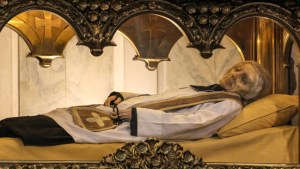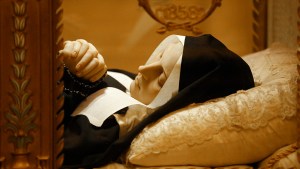Lenten Campaign 2025
This content is free of charge, as are all our articles.
Support us with a donation that is tax-deductible and enable us to continue to reach millions of readers.
In the case of some holy men and women, God’s preservation of their bodies is a sign of their holiness and a call to each of us to pursue sanctity.
The term “incorruptible,” when used within the Catholic faith, refers to bodies of saints that have not naturally decomposed over time. Incorruptibility is different from bodily preservation, such as mummification, embalming, or any other human effort. Rather, these bodies – often having been naturally buried for decades or centuries – show little to no sign of having corrupted. Additionally, some incorruptible saints are reported to give off a sweet smelling odor.
As the Author of all nature (including the laws of science), God clearly has the power to preserve the bodies of anyone he chooses. The Church considers the incorruptibles to be a sign of divine intervention – a miraculous occurrence – though this fact alone does not elevate a man or woman to sainthood (canonization is a lengthy process which requires the affirmation of several miracles performed by the saint).
Not every saint is incorruptible, and while incorruptibility is clearly a sign of God’s power that inspires reverence among the faithful, no specific reason is known for why some saints’ bodies are incorruptible and others are not.
Who are they?
The first known incorruptible is St. Cecilia, a Roman martyr who died in the latter half of the second century. When her body was to be moved to a new tomb over 600 years later, she was discovered in the exact same position she was recorded as being buried in.
She is just one of a number of saints known to be incorruptible, including St. Catherine Labouré, St. Charles Borromeo, St. Clare of Assisi, St. Francis de Sales, and a great number more. Some, such as St. Catherine Labouré’s body in Paris, can be visited for veneration by pilgrims in churches across Europe and beyond.
Many skeptics either ignore the miraculous state of these incorruptible bodies or come up with an inadequate scientific explanation. Yet no explanation beyond God’s direct intervention in the natural decay of these bodies can fully account for the bodies of these holy men and women who have remained largely intact over so many years.



